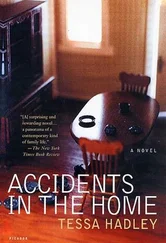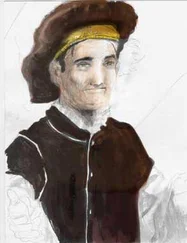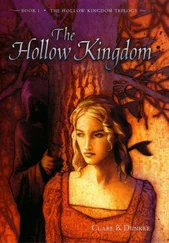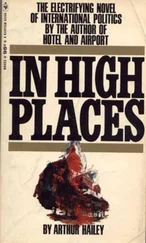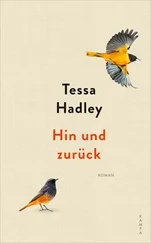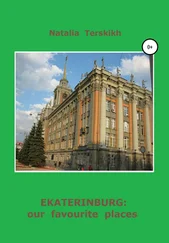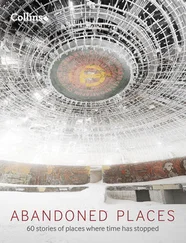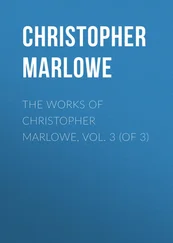It was a clever bit of storytelling by the vicar, but we would not be happy if he had just made up the yew tree, the fields and the felling. We would feel cheated. As the folklorist Jacqueline Simpson has pointed out, we want a reason to say of our dragons and their slayings, ‘there was something in it after all’.
The realisation of Wigram’s conceit not only provided an unusually detailed instance of a folk legend metamorphosing – and perhaps a model for how other parts of the legend had been seeded or transformed – it completely changed the nature of my curiosity. I no longer had to wrestle with what it meant to find a cave under a tree that according to tradition grew over a dragon’s lair, because that was back to front: the tradition did not begin until the day the tree was felled. But the question remaining is even more curious: why on finding a cavity under a tree in a field with no previous connection to the legend did those nineteenth-century labourers think of the dragon that Shonks slew?
This hints at much about folk legends and their status within communities as recently as the 1830s. Stories about dragons and their holes are assumed to have medieval origins, conjured by medieval minds as they conjured up other strange creatures to populate bestiaries, adorn the edges of manuscripts and support the corbel tables of churches, but nineteenth-century agricultural labourers? Was the legend so powerful and so ubiquitous in the Pelhams that when uneducated farm workers found an unexpected cavity under a yew tree they immediately turned to the legend of a dragon-slayer for an explanation?
That such wonders hid in the fields and spinneys of the English countryside so recently is a delight, as well as a reminder that folk legends differed from folk tales – that were never believed and told only for entertainment – by the evidence in the real world as well as in the story: the hilltop, the gravestone, the tree that sages can point at and say: ‘You can still see it today’. It proves the legend.
I was first attracted to Shonks’ story by the yew tree in a named field. Finding such survivals, tangible evidence for stories and folk legends, is psychologically very appealing. At the beginning of Albion , her compendium of English folk legends, the folklorist Jennifer Westwood quotes Walter de la Mare: ‘Who would not treasure a fragment of Noah’s Ark, a lock of Absalom’s hair, Prester John’s thumb-ring, Scheherazade’s night lamp, a glove of Caesar’s or one of King Alfred’s burnt cakes?’
Such wonders have been called mnemonic bridgesthat help us connect with the past. It is the reason people have venerated fragments of the cross, or followed in the footsteps of Caesar and Alexander. It is the attraction of the perennial plot device in children’s stories where the young hero or heroine awakes in bed thinking they dreamed it all, only to find the golden coin in their dressing-gown pocket, proving they had really been there. Coleridgeonce imagined a dream about Paradise where he was given flowers and awoke to find them beside him, and Hans Christian Andersen knew the power of objects that crossed the boundary between fantasy and reality when at the end of his little story ‘The Princess and the Pea’ he wrote: ‘The pea was exhibited in the royal museum; and you can go there and see it, if it hasn’t been stolen. Now that was a real story!’
Objects that locate legendsin a real landscape possess some archetypal magic. Some place the story in a distant, fantastical past, while others root it in the everyday. Some tales explain oddly shaped hills and standing stones by the antics of immense dragons, giants or the devil, but a yew tree in a field has the commonplace about it, the evidence is on a more human scale. There was a real tree, chopped down by real people, in a field with a name. It was important for the legend. Such things can be the reason stories prevail. Yet here was a strange instance of that rule because the yew did not ensure the survival of the legend by providing a regular, visible reminder of that story, since on the very day it became part of that story someone removed it from the landscape. It was an artefact, both in the sense that its significance lay in the workmanship of the woodcutters and in the sense that its place in the story was a remnant of the storytelling process. In spite of this, it undoubtedly helped to perpetuate the tale and did so largely thanks to Wigram’s rhetorical device.
The Shonks legend had the moat named for him and a mysterious tomb, and now it had a magical tree on the edge of Great Pepsells field as well.
Field names and Folk-lore are naturally classed together; both alike speak to us of the lives and customs of our forefathers; of creeds and cults, long since abandoned, but still surviving, though unrecognised, to these modern days.
—U. B. Chisenhale-Marsh, 1906
In the late 1930s, the English Place-Name Society asked schoolchildren to save the names of England’s fields before they were lost and forgotten for ever. In the fourteenth year of her forty-four-year reign as headmistress of Furneux Pelham School, Miss Evelyn Prior heard the call to arms and sent her pupils out to interview the farmers and field hands. The parish magazine for March 1937records that: ‘With the aid of the school children and an Ordnance map and a few other helpers, and at the request of the County Council, Miss Prior, the headmistress of our school has drawn up a list of the names of all the fields of the parish.’
Did they find Great and Little Pepsells?
These names situate the yew in the real world, and evoke a bygone landscape. As with tithe customs, field names once again bring us into the territory of collective memories and tradition. The folklore collector Charlotte Burne said thatall such ‘trifling relics’ were important for the study of social history: local sayings, rhymes, even the bell-jingles (the words that the different peals of church bells are supposed to ‘say’). ‘They reflect the rural life of past generations, with its anxieties, its trivialities, its intimate familiarity with Nature, and its strong local preoccupations.’ They helped make us what we are.
In Reverend Wigram’s day, the countryside was not numbered by bureaucrats but named by, and for, the people who worked it. Our landscapes and sense of the spaces around us were richer and more highly developed than today, or at least that is what the names would suggest. Today field names can help us recover that landscape from the blandscapes of modernity and to see our world with fresh eyes. Every parcel of cultivated land in the country had a name – more often than not one that can tell us something interesting about the land and put us in touch with the past.
It has been said that place names are linguistic fossils containing within them extinct words; they are often dense with information. They carry echoes of the dead, how they worked the land, their hopes and struggles, and the stories they told each other.
In many places, the fields themselves have disappeared. The London Borough of Ealing is not somewhere you naturally associate with the countryside, but it is the subject of the first of the English Place-Name Society’s series of Field-Name Studies written in 1976. Here beneath the pavements and Victorian villas are forgotten pastures that remember the names of local men known to have been on an early fourteenth-century list of the local militia. Other names will tell you where those men and their descendants built a dovecote, a menagerie, or ice house, where they quarried clay, farmed rabbits, or struggled to make crops grow in a stony field.
John Field, the aptly named historian and taxonomist of English field names, arranged them into useful categories. There are names that describe the shape of a field ( Harps ), its wild plants ( Cockerels ), the productivity of the land ( Smallops ), or long-lost buildings ( Duffers ). Its size ( Pightle or Thousand Acres ), how it was farmed ( Lammas Meadow ), and industrial uses ( Brick Kiln Meadow ). He came up with twenty-six types in all.
Читать дальше

